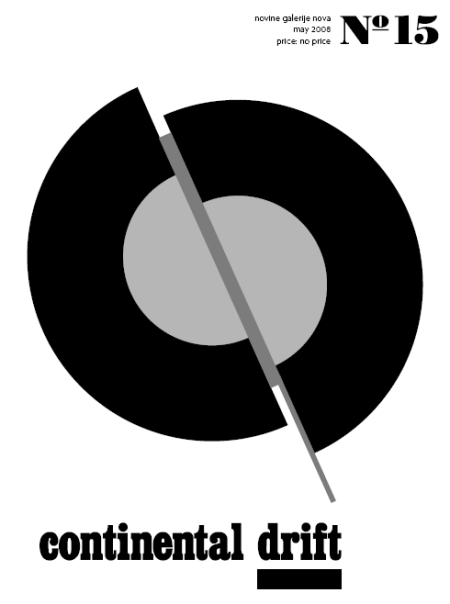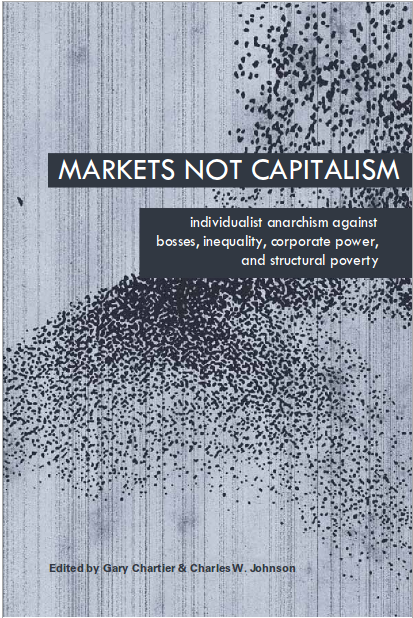Continental Drift Zagreb (2008)
Filed under newspaper | Tags: · activism, art, autonomy, capitalism, cartography, creative industries, economy, geopolitics, neoliberalism, politics, power, war

“It’s always useful to turn dreams into realities, because you get to measure the differences and even let yourselves be guided by the intrinsic gaps between the two. Continental Drift was the dream of a geopolitical analysis carried out by a diverse group (theorists, artists, activists) and mapped onto everyday social and political life as an expanding set of explanations and expressive potentials. The dream was made in USA, and even on Wall Street in New York City, but it was realized by a group of immigrants, returning exiles and general misfits, all marked by the basic heresy of left positions in an age of liberal capitalist empire. By transplanting this inquiry to Zagreb, Croatia – the home of the What, How & For Whom? collective – it seems we are bringing a new dream into focus. The desire is that of widening the intrepretative circle, crossing divides of language and historical experience, trying to build capacities of understanding and confrontation between the immigrants, exiles and misfits of the big continental blocs and especially their edges – the cracks that open up wherever anyone can no longer stand what is taken and imposed as the norm. Empire as we see it is always falling apart, for better and usually for worse, under the pressure of massive processes which we are unlikely to even see coming, let alone grasp or have the agency to change in any way. Yet as the urgency and also the absurdity of the present predicament begins to rise in intensity, at least all around there are people trying similar experiments.” (Brian Holmes)
Novine Galerije Nova, No 15, May 2008
Publishers: What, How and for Whom/WHW, Zagreb; AGM, Zagreb
Editors: Continental Drift Zagreb team (Ayreen Anastas, Rene Gabri, Brian Holmes, Claire Pentecost, What, How and for Whom/WHW, Ivet Ćurlin, Ana Dević, Nataša Ilić, Sabina Sabolović)
Design: Dejan Kršić
36 pages
Mikkel Bolt Rasmussen, Jakob Jakobsen (eds.): Expect Anything Fear Nothing: The Situationist Movement in Scandinavia and Elsewhere (2011)
Filed under book | Tags: · 1950s, 1960s, art, capitalism, everyday, life, politics, scandinavia, situationists, spectacle, utopia

“This volume is the first English-language presentation of the Scandinavian Situationists and their role in the Situationist movement. The Situationist movement was an international movement of artists, writers and thinkers that in the 1950s and 1960s tried to revolutionize the world through rejecting bourgeois art and critiquing the post-World War Two capitalist consumer society.
The book contains articles, conversations and statements by former members of the Situationists’ organisations as well as contemporary artists, activists, scholars and writers. While previous publications about the Situationist movement almost exclusively have focused on the contribution of the French section and in particular on the role of the Guy Debord this book aims to shed light on the activities of the Situationists active in places like Denmark, Sweden and Holland. The themes and stories chronicled include: The anarchist undertakings of the Drakabygget movement led by the rebel artists Jørgen Nash, Hardy Strid and Jens Jørgen Thorsen, the exhibition by the Situationist International “Destruction of RSG-6” in 1963 in Odense organised by the painter J.V. Martin in collaboration with Guy Debord, the journal The Situationist Times edited by Jacqueline de Jong, Asger Jorn’s political critique of natural science and the films of the Drakabygget movement.”
Contributors: Peter Laugesen, Carl Nørrested, Fabian Tompsett, Mikkel Bolt Rasmussen, Jacqueline de Jong, Gordon Fazakerley, Hardy Strid, Karen Kurczynski, Stewart Home, Jakob Jakobsen.
Publisher Nebula, Copenhagen; in association with Autonomedia, New York, 2011
Open access
ISBN 879936512X, 9788799365128
288 pages
Reviews: Kim West (Kunstkritikk, 2011), Lugo (2011).
See also Bolt, Jakobsen (eds.), Cosmonauts of the Future: Texts from the Situationist Movement in Scandinavia and Elsewhere, 2015.
More on Situationists
Gary Chartier, Charles W. Johnson (eds.): Markets Not Capitalism: Individualist Anarchism Against Bosses, Inequality, Corporate Power, and Structural Poverty (2011)
Filed under book | Tags: · activism, anarchism, capitalism, communism, economics, economy, market, neoliberalism, protest, revolution, socialism

Individualist anarchists believe in mutual exchange, not economic privilege. They believe in freed markets, not capitalism. They defend a distinctive response to the challenges of ending global capitalism and achieving social justice: eliminate the political privileges that prop up capitalists.
Massive concentrations of wealth, rigid economic hierarchies, and unsustainable modes of production are not the results of the market form, but of markets deformed and rigged by a network of state-secured controls and privileges to the business class. Markets Not Capitalism explores the gap between radically freed markets and the capitalist-controlled markets that prevail today. It explains how liberating market exchange from state capitalist privilege can abolish structural poverty, help working people take control over the conditions of their labor, and redistribute wealth and social power.
Featuring discussions of socialism, capitalism, markets, ownership, labor struggle, grassroots privatization, intellectual property, health care, racism, sexism, and environmental issues, this unique collection brings together classic essays by leading figures in the anarchist tradition, including Proudhon and Voltairine de Cleyre, and such contemporary innovators as Kevin Carson and Roderick Long. It introduces an eye-opening approach to radical social thought, rooted equally in libertarian socialism and market anarchism.
Publisher Minor Compositions, an imprint of Autonomedia, November 2011
ISBN 978-1-57027-242-4
440 pages
PDF (added on 2014-12-22)
Scribd

